SIHH 2014: Watches with Visible Movements
A look at the artistry of mechanical watch movements
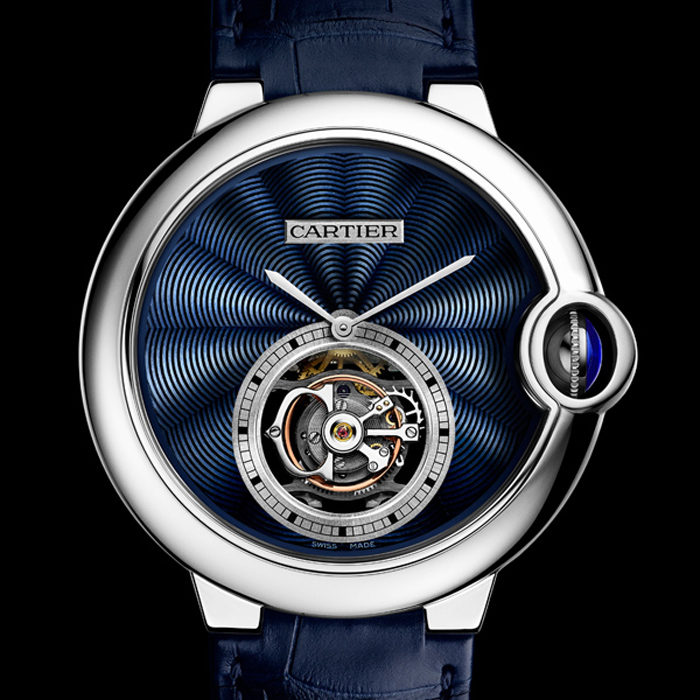
Among the many magnificent watches we had the opportunity to preview at this year’s Salon International de la Haute Horlogerie (SIHH) in Geneva, more than a few incorporated visibility into their movements and complications. From skeletons to just a peek, watches that offer a view to their heart are fascinating. Beyond just showcasing jewels, an exposed movement or tourbillon reveals the miniature mechanical universe behind the face of a watch. The attention to detail required to showcase these inner-workings bring the craft to a level where the mechanics become the art. The following watches with visible movements were our favorite new launches for 2014 from the brands present.
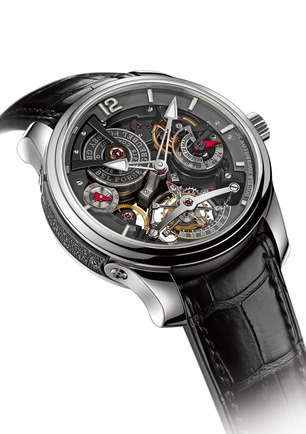
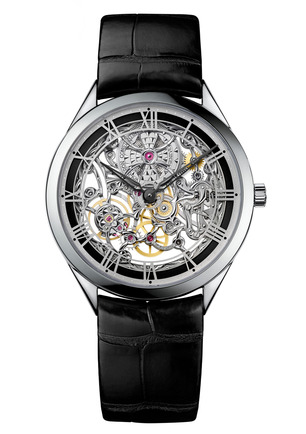
While just 10 years old, Greubel Forsey delivers some of the most masterful watches made. These are extreme time machines with components made entirely in-house, and annual production is limited to fewer than 100 time pieces for the entire company—meaning just a few of each style are available each year. The Double Tourbillon 30º Technique series’ new Bi-color features a GF02s movement with a platinum case, a new black chrome coat on the movement, and is as technically impressive as it is visceral. Skeletonized hands rest on top of an active open-worked movement. Beneath its sapphire crystal, an architectural movement featuring the double tourbillons—which are installed at a 30-degree angle as typical for the brand—and gear train are visible in all their glory. The watch features a 12-day power reserve. The half French, half British team behind the brand are highly awarded and imaginative, and highly regarded by their peers. Their dedication, craft and the exclusiveness of the brand comes at a price: $500,000.
Vacheron Constantin‘s Métiers d’Art Mécaniques Ajourées celebrates sculptural engraving and exalted watchmaking inspired by trains and train stations in the 1930s. This timepiece is entirely transparent, front and back, featuring the entirely of its moving parts—including the Calibre 4400 in-house movement. This mechanical, manual-winding watch has 127 components and 21 jewels. It’s haute horlogerie at its finest from one of the major players in the industry, showcasing hand-engraved artistry and Grand Feu enameling. The Métiers d’Art Mécaniques Ajourées starts around $75,200.
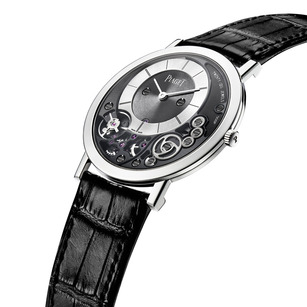
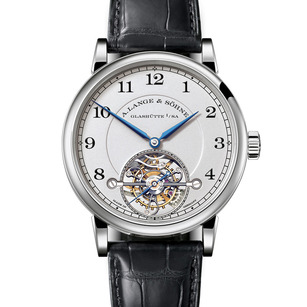
The Piaget ultra-thin Altiplano 38MM 900P is the slimmest mechanical movement in the world at just 3.65 mm. Their latest in this series—celebrating the house’s 140 years of watchmaking—does a wonderful job of incorporating some of the underlying parts into the design of the face. The entirety of the design is a throwback to the first ultra-thin hand-wound movement made by Piaget back in 1957, the Calibre 9P. The structure of the case itself incorporates the back main-plate, lending itself to such a slender piece. This latest white gold edition sells for $27,800.
A. Lange & Söhne‘s debut of the 1815 Tourbillon, featuring a window into their movement. They chose to make visible their ZERO-RESET mechanism, a complication which allows for a more convenient way of setting the watch—when the crown is pulled, the seconds hand stops and jumps to the zero position, yielding a perfect positioning of the minute hand. This is something the brand pioneered, and now in this tourbillon model, it’s presented to the naked eye. It’s met with a manually wound Lange manufacture calibre L102.1 movement. We’re drawn to its crisp and clear dial, which promotes legibility. In service to this, its diameter was increased to 13.2 millimetres. Limited to an edition of 100 watches, an 1815 Tourbillon (if you can find one) will cost around $201,300.
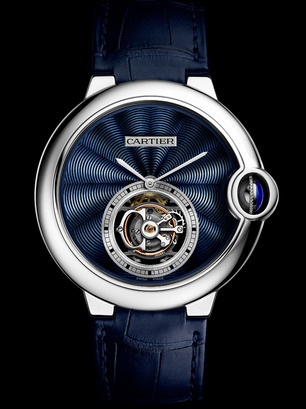

Continuing their Ballon Bleu series, Cartier‘s Flying Tourbillon enamel watch provides a window into the new generation of in-house calibre 9452 MC Cartier fine watchmaking movements. Set within the blue flinqué enamel dial, a round window presents an eagle eye view of the inhouse movement. This is the first of its kind, with a 39 mm case and a thickness of roughly 11.4 mm—making the watch quite compact. It’s also limited to only 100 pieces, as the dial-making process is quite complicated, beginning as a powder and then guillochéd with a radiating motif of intersecting arcs. Cartier’s estimated price point will be $119,000 when the watch is released in April 2014.
If you can master its very complex presentation, Richard Mille‘s RM 60-01 Regatta is a skeletonized chronograph with fully-functional nautical complications, including the ability to pinpoint the correct compass direction using the position of the sun and the local time. The chrono features a quick locking and releasing mechanism. It sports a rotating bezel and a 24-hour scale disc. Inside the case it’s a complex, mechanical machine running on a grade five titanium inhouse RMAC2 caliber. It’s sporty in style and function and comes together nicely with a rubber strap almost seamlessly blended into the case. Prices start around $155,000, and the watch will be available in summer 2014.
Images courtesy of respective brands












